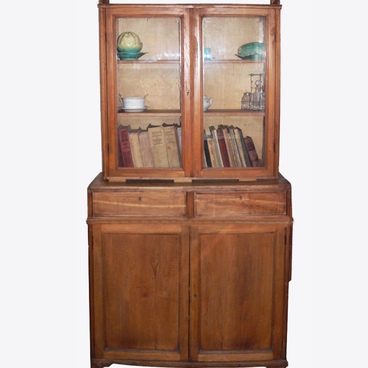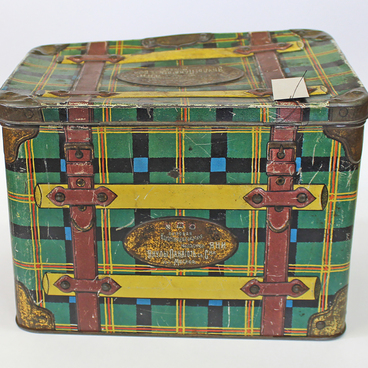The collection of the Kotlas Museum of Local Lore contains a birch bark briefcase of the early 20th century. It was found in an uninhabited house in the village of Voroshílovo, Lénsky District, Arkhángelsk Region.
Birch bark occupied a huge place in the life of a Russian. The bark accompanied a person throughout his life - from birth to the last days. Birch bark was used to make rattles, cradles, sandals, and hats. Various tools were woven from it — baskets, containers, road salt shakers, cases, floats for fishing, birch bark boats, and boxes for women’s jewelry. Often all this was decorated with carving, painting or embossing. Ceiling thatch and lower rims of the housing frame were laid in layers of birch bark to protect huts from dampness and decay.
Birch bark craftsmanship took place mostly in winter and spring, when not otherwise busy with agricultural worries. The most widespread subject of birch bark trade in the Arkhangelsk region was birch baskets. The Russian is borrowed from the Komi language: “toi” means “birch bark”.
For the manufacture of birch bark products, craftsmen used traditional tools: a spade, jamb knife, scissors, “shemíltsi”, and “kochedík”. A jamb knife is a root or branch of a tree sharpened at two angles. It is used to safely remove the bark from a tree. Handcrafted jamb knives are steel blades with different bevel angles and sometimes double-sided sharpening. You can cut birch bark with such a knife both with the toe of the cutter and with its heel. Currently, craftsmen use ordinary scissors, although earlier used special forged ones for work. “Shemiltsy” are simple clamps for birch bark, and a “kochedyk” is a flat awl with a hook-like bend for weaving. In the Arkhángelsk region, many modern craftsmen work observing the traditions of the craft.
Another way of making items from birch bark is actual weaving. Depending on the product, the master would prepare birch bark ribbons with a width of five millimeters to seven centimeters and weaved various objects with straight or oblique weaving. The size of the wickerwork ranged from chicken egg-sized salt shakers to large chests. Baskets and spacious shoulder bags were woven in large quantities. This birch-bark portfolio from the museum’s collection is made in a similar way.


